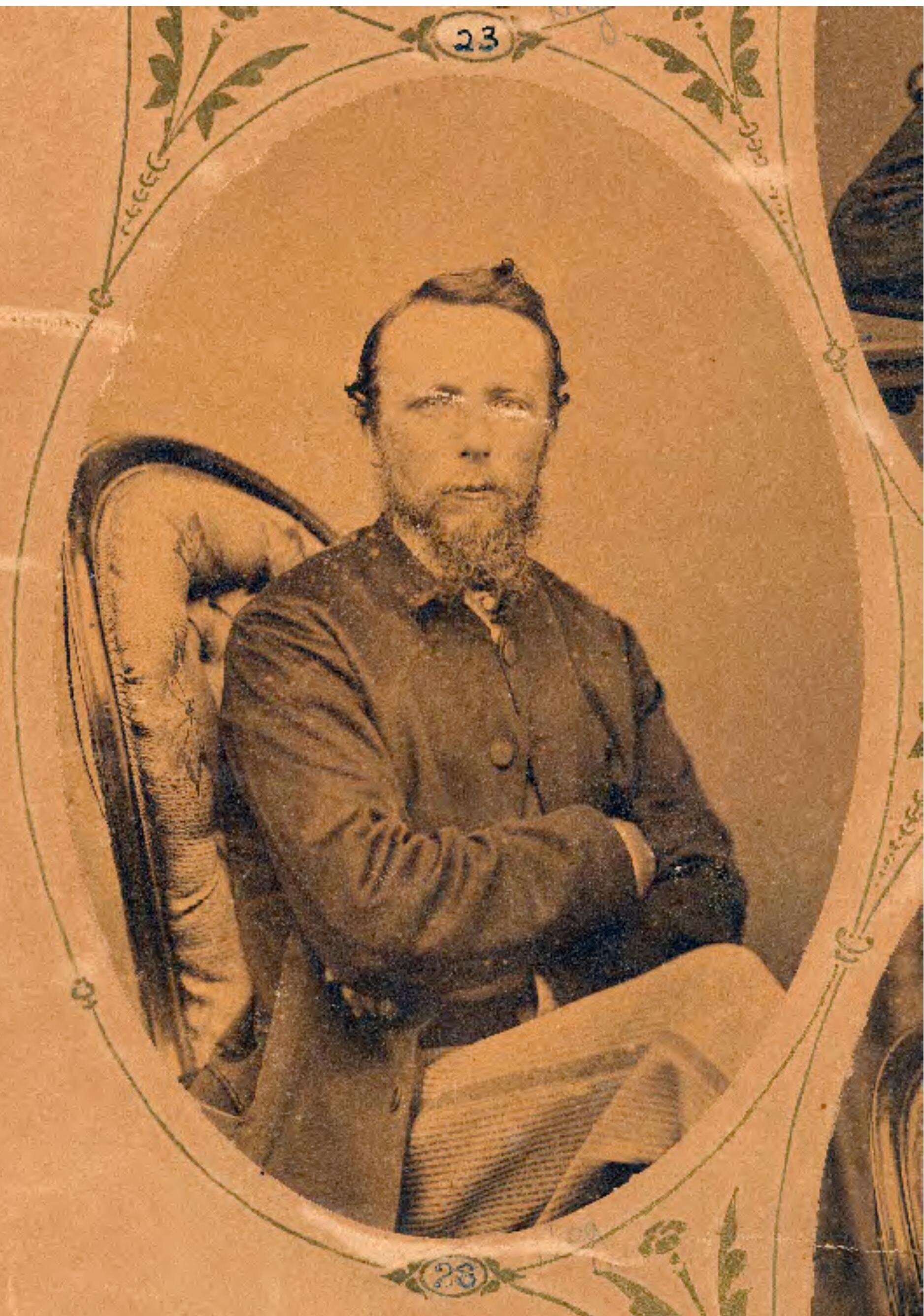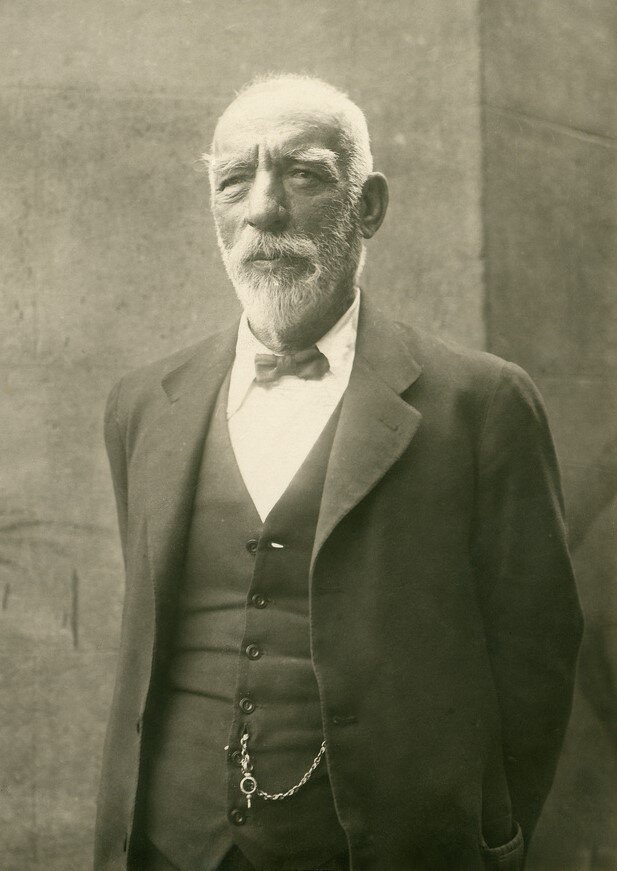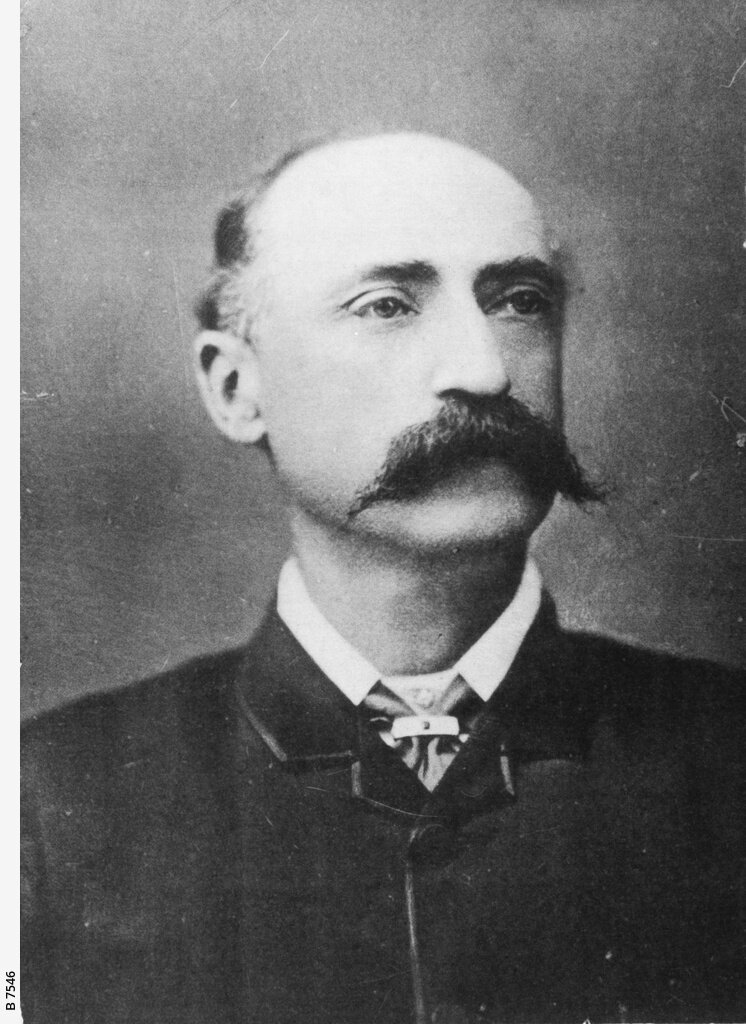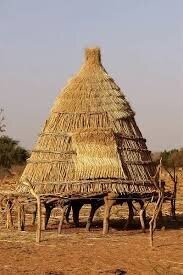Fact Checking of Mr Pascoe's Grain Stores
As we have delved deeper into the claims Mr Pascoe makes in his book, Dark Emu, and during his lectures, we have frequently failed to be able to verify many of his claims. They just do not seem to pass even a cursory fact-check.
For example, his Speakola Lecture, on 8th July 2009 during NAIDOC Week at the Art Gallery of NSW in Sydney, appears to contain a number of claims regarding Aboriginal grain stores that we could not verify, even using Mr Pascoe’s own cited sources.
But at least Mr Pascoe’s did pre-warn us with his claim, “I'd like to tell you a few yarns because that's all I am, I'm a storyteller” - See Lecture at 1:00
For Mr Pascoe’s theory to be accepted that Aboriginal people lived a settled, agricultural life, it would appear that he needs to provide evidence to show that Aboriginal societies had the required storage facilities for foods and grains. Mr Pascoe documents a number of examples in Dark Emu and during his lectures which he says provides evidence that large amounts of harvested grain was stored by the Aborigines.
In his Speakola Lecture he says,
“Ernest Giles' brother, a bit earlier than this, was travelling through the Northern Territory, and came across huge stores of what he discovered was grain stored up in platforms, three metres off the ground. Each of those stores weighed a ton. He had never seen anything like it before, but it didn't stop him stealing it, because, once again, he was an explorer. He was lost and he was angry. He took the grain that had been stored for the harvesters.” (at 7:44).
Mr Pascoe provides no specific location evidence to support this incredible claim, a claim that the Aborigines built a timber platform 3 metres from the ground that was strong enough to carry a tonne, the weight of a small car. No evidence is provided to explain how the weight was calculated to be a ton, nor what the holding vessel(s) was constructed of. Given the density of grain is about 700g/L, then the storage vessel(s) would need to be of a volume of at least 1,400 litres. And what was it made of? - timber planks or dishes; woven baskets?
We have found photographs of some typical Aboriginal food storage platforms from central Australia. These are from Mr Pascoe’s own cited reference in Dark Emu, Paul Memmot’s wonderful book on Aboriginal architecture, Gunyah, Goondie and Wurley, The Aboriginal Architecture of Australia, QUP 2009 and, as can be seen in Figure 1, these are typically only up to about 1.8 metres in height and are not strong enough to hold anything like 1 ton (tonne) of grain seed.
Figure 1 : “A range of food storage platforms in…central northern South Australia in 1971…Food and other valuable commodities…were commonly stored by placing them …on top of enclosed shelters… An alternative…was to construct special storage platforms at approximately 1.8 metres high…”
- Photographs by Peter Hamilton 1971 of two-post, four-post and six-post platforms and single tree storage platform. - Memmot, P., Gunyah, Goondie and Wurley, The Aboriginal Architecture of Australia, QUP 2009, p 44-45.
In an effort to verify these claims by Mr Pascoe, we have read Ernest Giles’ journal, Australia Twice Traversed, Vol’s I & II, 1889, (Doubleday Facsimile, 1986) and word-searched the online version and have found no reference to any native granaries in Ernest Giles’ writings. Our research also shows that Ernest Giles’ brother, Robert Eugene Giles, was not an explorer as suggested by Mr Pascoe, but he was in fact an accountant in Hamilton, Victoria. He doesn’t appear to have ever been exploring in the Northern Territory and, as Mr Pascoe has provided no evidence for his claims, we are left to wonder as to whether Mr Pascoe may have his explorers mixed up. Two other colonials in the region at the time, who were brothers, as well as contemporaries of Ernest Giles, are Christopher and Alfred Giles.
We have read the journal of Alfred Giles, Exploring in the ‘Seventies and the Construction of the Overland Telegraph Line, (Friends of the State Library of Adelaide, 1995) and nowhere could we find any mention of native granaries or storage platforms of any size.
However, Alfred’s brother, Christopher Giles does record coming across a native granary in central Australia. The academic, Ingereth Macfarlane, in her 2010 thesis, Entangled places: interactional history in the western Simpson Desert, central Australia, records that:
“In Christopher Giles, there is an unusually sensitive observer…He has a good eye for telling details…He is noticeably free from prejudices of his times regarding Aboriginal people, providing amiable, unjaundiced accounts, in which the full humanity of Aboriginal people registers. An explanation for this tone may lie in an early familiarity with Aboriginal people. He says he was ‘Accustomed to the natives from my boyhood and able to speak at least one dialect fluently’.” (ibid. p109-110).
So here, in Christopher Giles, we have what we should regard as a reliable witness. Macfarlane then quotes Christopher Giles further regarding pilfering by the Aborigines :
“At first we saw but little of the natives, although we had good reason to know that they saw a great deal of us. Axes began to disappear…and the men’s clothing hung out on bushes to dry, near the camps, would be missing in the morning…”
She continues with :
“While collecting poles for building the telegraph line in the Finke River bed, [Christopher] Giles encountered a tree platform on which was a ‘native granary’. In it were stores of different grass seeds in bags made from the ends of shirt sleeves and trouser legs that had been appropriated earlier from Giles’ survey team’s washing line.” (ibid. p243).
“[Christopher] Giles also describes the removal and reinterpretation of the construction team’s clothes in the Finke River channel, where he discovered a ‘native granary’ consisting of:
bags of different kinds of grain, stored up for the winter, or rather the dry season. The bags were of various sizes, and consisted of the legs of our trousers and the sleeves of our shirts, tied up at each end, and filled with seeds. This was too much for the patience of my men, who were for forthwith confiscating the whole lot. But I would not allow this, nor permit anything to be removed.” (ibid. p169-170).
This is also commented on in a paper by the academic Bill Gammage, one of Mr Pascoe’s main sources for his ‘theory’ of Aboriginal agriculture. Gammage, quoting Christopher Giles, writes,
“On the Finke near Mt Charlotte in 1870, Christopher Giles
‘discovered a native granary. This was a rude platform built in a tree, about 7 or 8 feet from the ground, on this were placed in a heap a number of bags made of close netting. Dismounting, I climbed the tree to examine the bags, and was astonished to find they contained different kinds of grain, stored up for the winter, or rather the dry season…the legs of our [stolen] trousers and the sleeves of our shirts, tied up at each end, [were also] filled with seeds.” (Gammage, B., Galahs, p 9).
So it appears that the only record, linking an ‘explorer’ named Giles with an Aboriginal ‘granary’, is when some resourceful Aborigines appreciate the benefits of woven, fabric trousers and shirts for the storage of grains, and consequently pilfer clothing from Christopher Giles’ Overland Telegraph party so as to load them with seeds for long-term storage, 2 1/2 metres up a tree.
We also note Christopher Giles expressly forbids his men from stealing this grain, which we estimate to be in the order of tens of kilograms, or maybe a hundred or so kilograms, contrary to the ‘one tonne’ that Mr Pascoe asserts.
In addition, Christopher Giles wasn’t ‘an explorer’, and he wasn’t ‘lost’ or ‘angry’, as Mr Pascoe asserts. He was just an Overland Telegraph Line supervisor collecting poles for building the telegraph line in the Finke River bed (MacFarlane, p 243) and he didn't, as Mr Pascoe claims, steal the vast amount of stored grain. Quite the reverse, in fact.
If we had to guess as to why Mr Pascoe seems to get his facts muddled, we think that his great ‘story-telling’ ability is overpowering his history researching skills. We are lead to believe this because, also in Bill Gammage’s paper on Galahs, we find this quote on page 9:
“North of Newcastle Waters in March 1871, AC Ashwin chanced upon a native encampment...
‘[with] large wooden dishes four and five feet long filled with grass seed as large as rice with the husk or the skin on the seed. I think it was a species of rice which grows in the flooded country 40 or 50 miles in extent and north of Newcastle Waters. There must have been about a ton of seed stored there in 17 large dishes, full and all covered with paper-bark. The dishes were nearly all five feet long and a foot deep, scooped out of solid wood.’
Gammage records another discovery of stored rice where,
“Ashwin found there six large wooden dishes full of rice stored in trees and covered with paperbark. He boiled a bagful. It was good : ‘pity we did not take more’, he wrote. (ibid. p9).
So, from each of the separate, historical records described above, Mr Pascoe is able to assemble his, ‘ton of stored seed’, more than one ‘granary’, platforms up trees at a height of 2 1/2 metres, someone with the surname Giles who has a brother, and an admission by a colonial ‘explorer’ that he took, or ‘stole’, some seed, albeit only a bagful as a trial boil-up.
To us, it now looks like the 'story-telling’ skills of Mr Pascoe kick-in as he spins a ‘yarn’ that appears to combine all these disparate records into a neat story that better suits his narrative that the British colonials ignored, destroyed or stole the achievements of the Aboriginal agriculturalists on a frequent and vast scale. Mr Pascoe writes :
“Ernest Giles' brother,…was travelling through the Northern Territory, and came across huge stores of what he discovered was grain stored up in platforms three metres off the ground. Each of those stores weighed a tonne. He had never seen anything like it before, but it didn't stop him stealing it, because, once again, he was an explorer. He was lost, and he was angry. He took the grain that had been stored for the harvesters.” (Speakola at 7:44).
and then in his book, Dark Emu :
‘Many explorers, including Giles and Ashwin, survived difficult stretches of their journey only after plundering these reserves [of Nardoo flour] ‘- Dark Emu, 2018 reprint, p34;
‘The explorer Ernest Giles was contemptuous of Aboriginal achievement. That prejudice squeezed his racism like toothpaste from a tube,…’ Dark Emu, 2018 reprint, p34;
So we end up with Mr Pascoe claiming, “Ernest Giles’ brother” [no he wasn’t] came across multiple stores each of one ton(ne) up trees [no, there is only one record of a ton of stored rice grain, and it was on the ground in an encampment], on platforms 3m above ground [why claim 3m when it was 2 1/2m?], which he then stole or plundered [no, Christopher Giles didn’t, and AC Ashwin took only one bagful to ‘boil-up’, presumably as a ‘trial tasting.’]. He was lost, and he was angry [no-one was recorded as being lost or angry].
But Mr Pascoe’s treatment of the facts seems to get worse. Like all good ‘story-tellers’, Mr Pascoe has the ability to spin his ‘yarn’ according to his audience and the emphasis he wants to make. Let’s compare what Mr Pascoe presents as the ‘facts’ of Ernest Giles’ discovery of an Aboriginal ‘granary’ in his Speakola lecture of 2009, to what he was saying about the same apparent ‘facts’ in 2015, in a chapter entitled “Bread” in the book, “The Intervention - An Anthology”, Scott, R., & Heiss, A., Eds. Published by Newsouth 2015, (2016 edition p137):
“Ernest Giles found siloed stores of this grain and flour weighing over a ton. And he stole it. Imagine the dent in the economy that would have made. And we wonder why the Aborigines were fighting to repel the Europeans.”
- “The Intervention - An Anthology”, Scott, R., & Heiss, A., Eds., Published by Newsouth 2015, (2016 edition p137).
“Ernest Giles' brother,…was travelling through the Northern Territory, and came across huge stores of what he discovered was grain stored up in platforms three metres off the ground. Each of those stores weighed a tonne. He had never seen anything like it before, but it didn't stop him stealing it, because, once again, he was an explorer. He was lost, and he was angry. He took the grain that had been stored for the harvesters.” - 2009 Speakola Lecture - (Speakola at 7:44).
So his ‘story’ has now morphed into Ernest Giles himself, not his brother, stealing all the grain, as well as the new item of flour, both of which are now said to be siloed rather than just stored on a platform. By introducing references to “the economy” and “fighting”, Mr Pascoe appears to be attempting to place some simple journal records describing Aboriginal grain storages within a wider political context, which we feel is not warranted by the meagre evidence offered by Mr Pascoe.
After studying all of Mr Pascoe’s claims and references with regard to these Aboriginal grain stores, it appears to us that his ‘story’ does not pass simple fact-checking. In addition, the meagre number and scale of the actual Aboriginal grain storages that we could verify, do not appear to constitute proof that Australian Aboriginal society was a settled, agricultural one with large, long-term grain storage facilities.
Rather, the majority of the examples provided by Mr Pascoe are best described as ‘caching’, the storage of relatively small amounts (a few kilograms up to around ‘two bushels’ - approximately 50kg) of seed-grains. These caches are generally hidden in pits (1), wrapped in grass and mud (2), or stored up on platforms (3), to protect them from birds and scavengers while the Aborigines are absent. This, we would suggest, only supports the idea that the Aborigines were leading a nomadic life, not a settled, agricultural one. When they collected a good crop of seed in any particular season or location, they cached the excess for when they returned to the area at a later date. As they were nomadic they could not carry large amounts of surplus seed-grains. If they were leading a settled, village agricultural life one would expect that the first explorers would have reported much larger permanent silos or granaries, as one finds in agricultural villages in Africa. There is no evidence that large, permanent silos such as these ever existed in Australia.
Indeed, when we actually check one of Mr Pascoe’s peer-reviewed, cited references in Dark Emu, R.G.Kimber’s paper, Resource use and management in central Australia (1), we find, again, that Mr Pascoe appears to only select sections of Kimber’s paper that suits his narrative of Aboriginal agriculture and seed storage, but then he completely ignores Kimber’s conclusion :
“The evidence on storage suggests many small caches of seed-foods and dried fruit, rather than a limited number of very large caches. In some instances, however, the seeds were not stored, being naturally preserved on the plants or in the near vicinity.” - Kimber ibid, p20 (our emphasis).
In other words, the Aborigines made small caches of surplus seeds and fruits and did not have large, central stores, and in fact, they even just left the seeds and fruits preserved on the plants to be collected at a later date. This practice has all the hallmarks of a classic, nomadic, hunter gatherer society, not a settled agricultural one.
Rather than just rely on old colonial explorer’s journals for information about Aboriginal food storage, as Mr Pascoe does, we have been able to locate testimony from an Aboriginal woman, Jukuna, who actually lived the life of a desert nomad with her family until the 1960’s, when they came out of the Great Sandy Desert and made contact with the wider Australian society for the first time. This is what she had to say about the traditional, food-storage practices of her Aboriginal band :
“A good rainy season made the grasses grow well…with a lot of rain we were able to store away the seed to eat later on. To store the seed we would strip some bark from a paperbark tree to wrap the seed in a parcel, or we’d gather some strong grass and use that to make a container like a nest to hold the seed. We wrapped the seed tightly in packages, and tied them up. Then we would cut four forked sticks from a tree, put rails across, and built a frame on top of them. We arranged parcels of food wrapped up in grass or bark on the frame. Then we built a small hut over the top of it to prevent the food from getting dry. We left it there so that we could come and get it later when we needed it and the trees no longer had seeds.
Sometimes we stored seeds, particularly acacia seeds in a hole in the ground. We used to line the hole with grass, put in a layer of seeds and cover it with bark and then sand.”
“ We used to eat a desert nut called ngarlka…The whole year round we could gather them from under the trees…The new nuts hang there on the trees unripe until the hot season comes [when they drop]” (3).
Jukuna’s country, in the Great Sandy Desert, is well within Mr Pascoe’s great, “Aboriginal Grain Belt” (Dark Emu, Reprint 2018, p28), but the life she describes in her book is one of a nomadic, hunter-gatherer. There were no settled, Aboriginal agricultural societies here with soil cultivation, seed planting, tilling, irrigating or storing of tonnes of seed surpluses in silos, as claimed by Mr Pascoe.
Jukuna’s country - the Great Sandy Desert in NW Australia - which is a tough environment but nevertheless, Jukuna and her family were able to survive here as hunter gatherers. It is not ‘agricultural’ country.
References :
(1) Kimber, R.G., Resource use and management in central Australia, Australian Aboriginal Studies, 1984 (No2), p20.
(2)- R. Brough Smyth, The Aborigines of Victoria and Other Parts of Australia and Tasmania, 1876, Part II, Pub. JC O’Neil, 1972, p 302.
(3) Bent, Ngarta, Jinny, Two Sisters, Magabala Books, 2016, p60-61.













